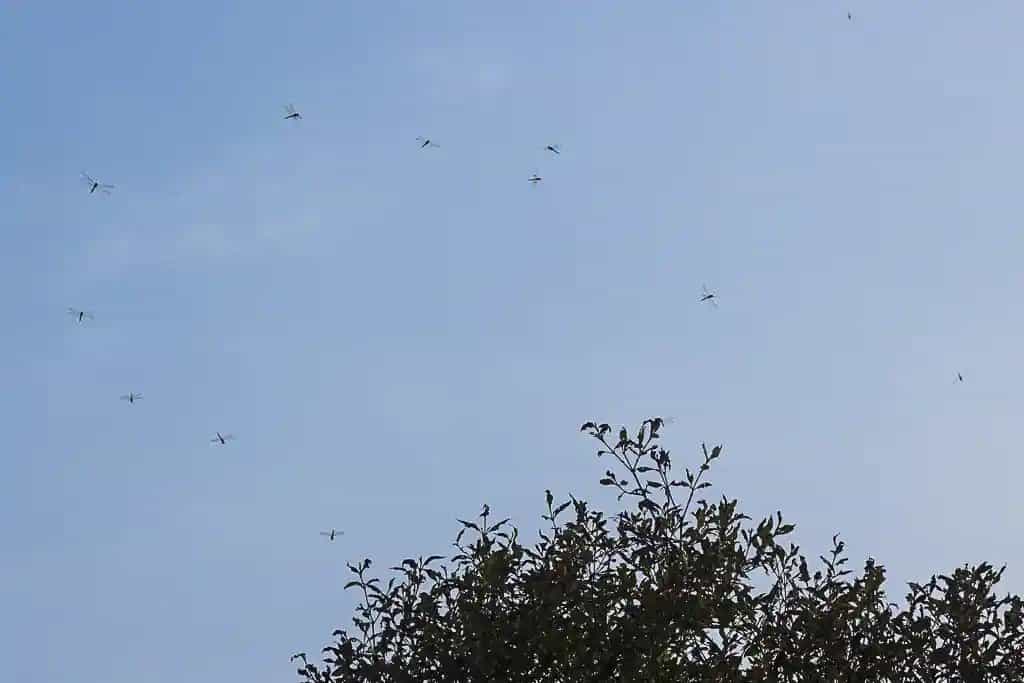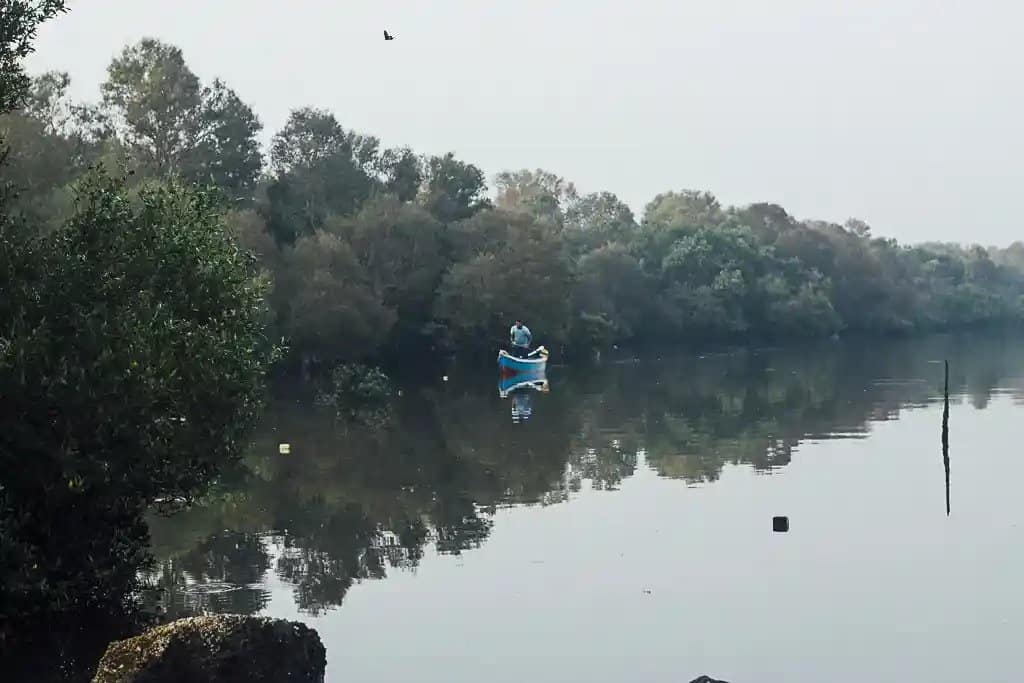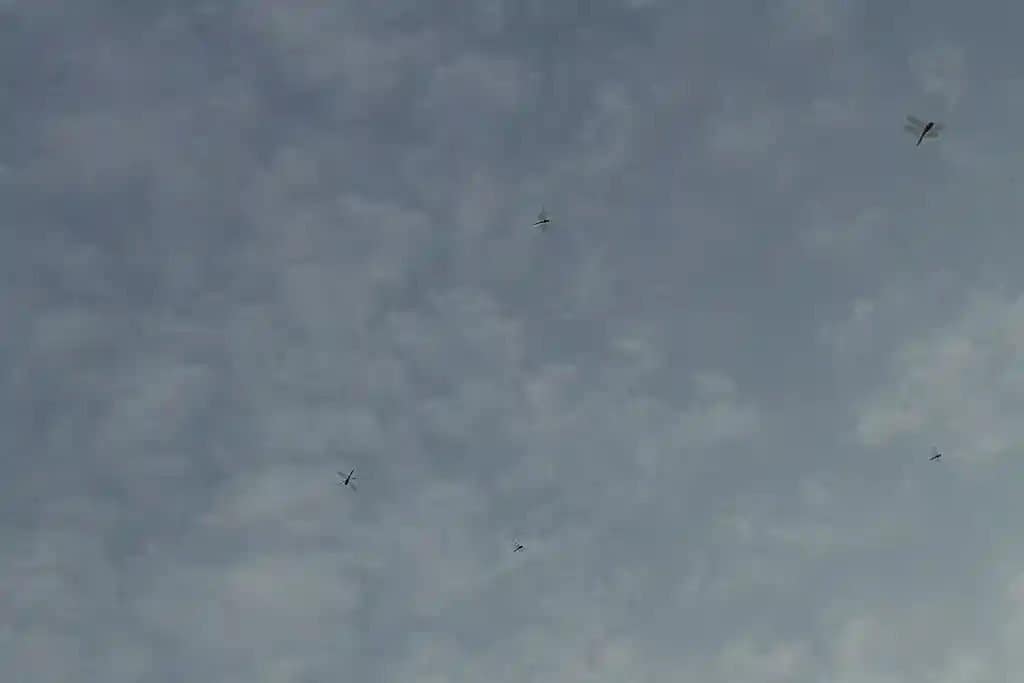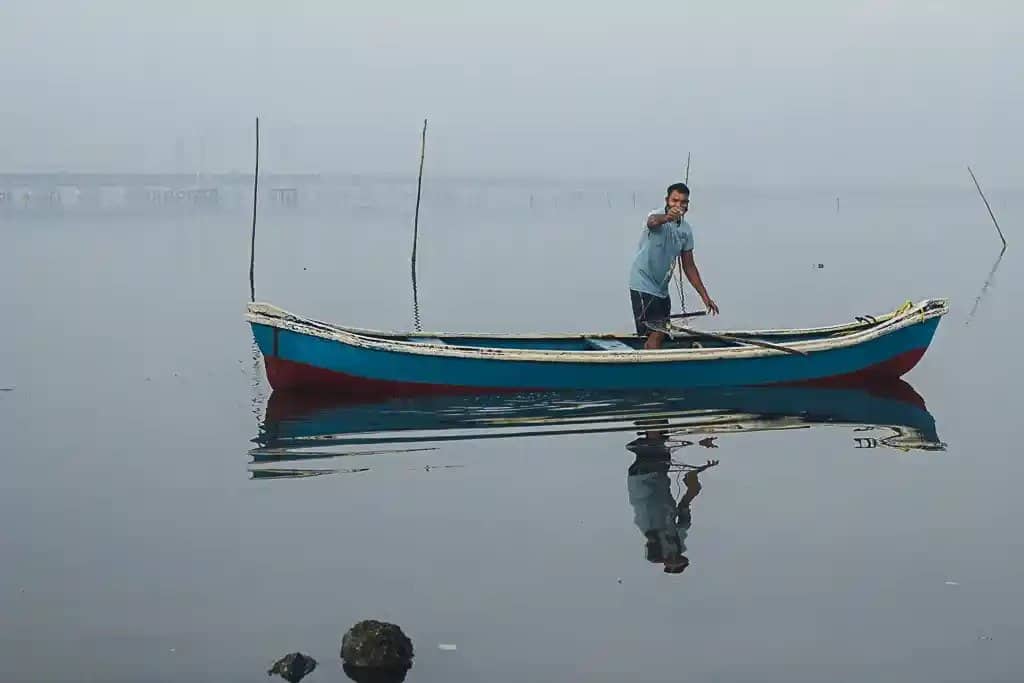It’s that time of the year in Mumbai now. If you visit the mangroves of Mumbai these days, you will see clouds of dragonflies (Pantala flavescens) dancing above them.

Dragonflies undertake one of the longest migrations known among insects. They fly all the way from the Deccan to South Africa riding the North-East monsoon winds. In Kerala, the dragonflies appear just around or after the festival of Onam in September, when the South West Monsoon loses steam and are called Ona-thumbi or the dragonflies of Onam. In Mumbai, we do not have a name but they appear a few weeks after Onam, which is right now.

However, not all dragonflies migrate great distances. To be honest, I can’t confirm if these dragonflies are waiting to fly across the sea or go back inland but the timing suggests that these are ready to go on a long journey.
Whatever the journey, they do pause to make use of the moisture in our mangrove forests all over Mumbai and they are a sight to watch.

When I posted an image of the dragonflies from the Thane Creek on Twitter, I got a reply from a person who saw bats and kites chase them with mouth and beaks open to gobble them up! And there’s this bird called White Throated Fantail that specializes in it, among other things.
According to experts, using tailwinds from a high altitude tropical system called Inter-tropical convergence zone or ITCZ, dragonflies can zoom in 24 hours, from the southwestern tip of India to the Maldives and then go further south-west.
Sid Agarwal, who studied aeronautical engineering, reached out to me with this interesting trivia about the dragonflies “And they eat mosquitoes and their wings are crazy efficient. And the small tips you see at the end of their wings actually work as counter weights. Those studying fixed wing flight are actually made to study this!” He also suggested an illustrated book for children about dragonflies, called Saahi’s Quest from Kalpavriksh, Pune.
The mangroves


The mangroves of Mumbai have many surprises that are visible and hiding. While I was looking for ways to shoot these dragonflies using my phone, I saw a fisherman from Vashi Gaon slowly go by on his boat checking the crab traps he had placed overnight. He wasn’t very lucky and he pointed out they should all be in that direction. He pointed towards Airoli and Bhandup, to the north and said that the birds are all feeding there today. I am hoping that I will get to see some flamingos feeding here during the low tide.

The skies in Mumbai are slowly turning blue and soon the butterflies will also be here. Keep your eyes peeled open.

Those interested in knowing more about dragonfly migration can read this beautiful story from cell.com, Masters of the Monsoon.
This article first appeared on the the authors blog Mumbai Paused, and has been republished with permission, after minor edits.
Also read:
How a Navi Mumbai citizens group fought for the flamingos